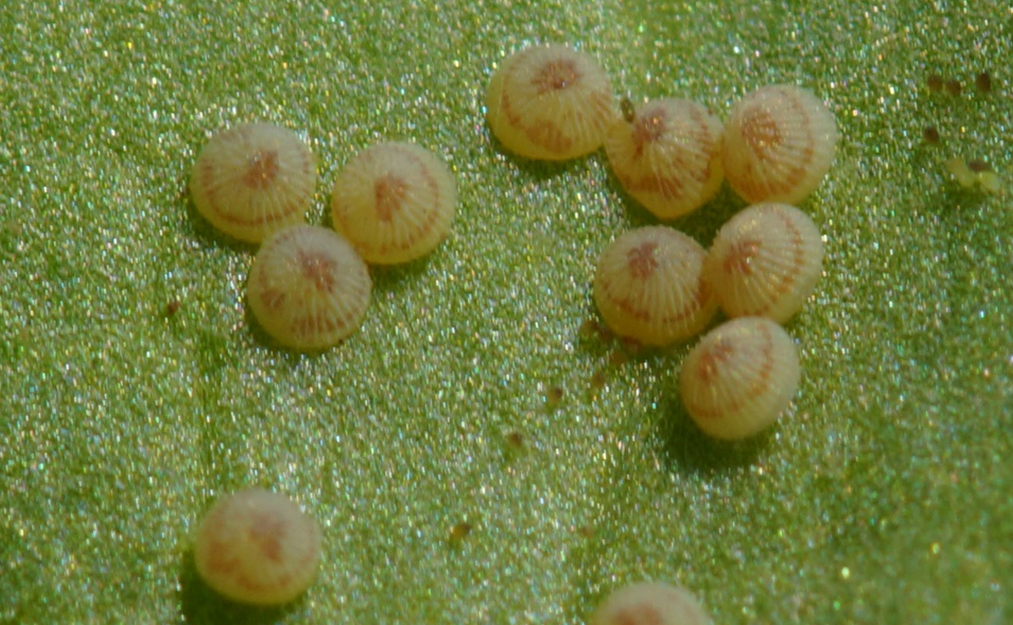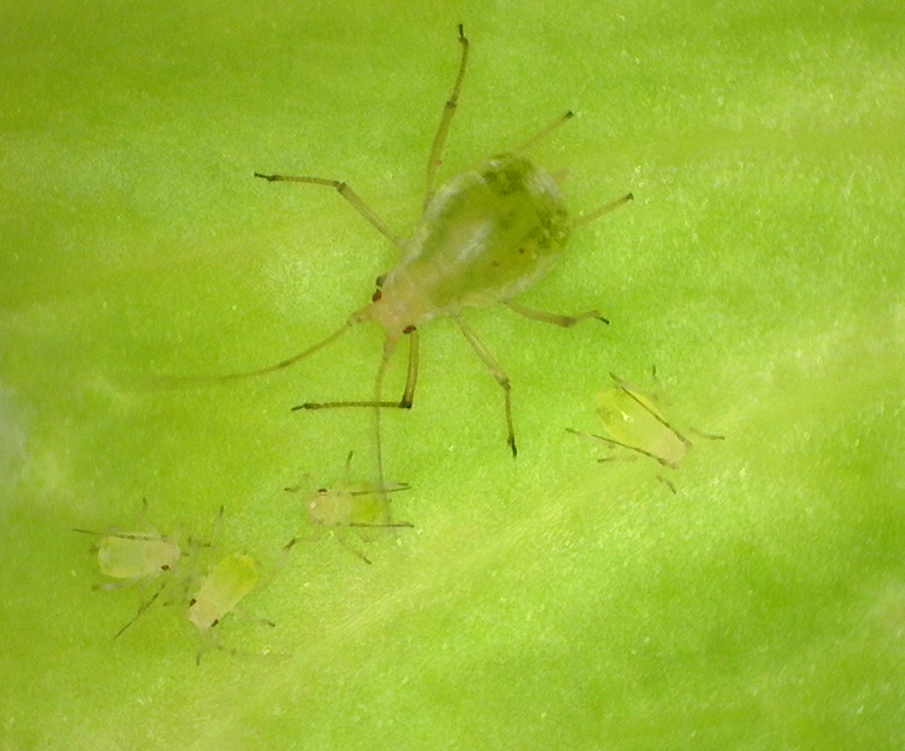Aphids: In the past two weeks, aphid populations remained relatively
low due to the cooler weather we have experienced. However, with the weather expected
to increase back into the 80’s for the next 10 days, PCAs should be on the lookout
for foxglove and lettuce aphids on late season lettuce. Green peach aphids remain
abundant on cole crops; we can find hundreds of aphids per plant on small cabbage
and broccoli at the Yuma Ag Center (YAC). Because aphid species are inherently different
in their susceptibility to insecticides, the proper choice of product is important
for achieving adequate control. In my lettuce trials, to date Movento, Sequoia,
Sivanto, and Beleaf have provided the most consistent knockdown and residual control
of green peach and foxglove aphids.
Thrips: Similarly, thrips were becoming quite abundant until the
cooler weather appeared. Over the past 2 weeks thrips numbers have actually decreased
in trials conducted at YAC. However, if dry conditions prevail, PCAs should expect
thrips numbers to rapidly increase with the warmer weather. They should also expect
thrips adults to begin migrating into late season lettuce fields from recently harvested
fields. This can often make chemical control of thrips populations very difficult,
particularly in March, as thrips adults may continually re-infest fields following
spray applications. See the Thrips
Control Chart 2018 for more information.
Corn Earworm: We have had no reports of corn earworm larvae showing
up in head lettuce from local PCAs. We are also not finding CEW on head lettuce
plaots at YAC, in fact it is rare to find a cabbage looper or beet armyworm. However,
we did have a pheromone trap spike last week in the Yuma Valley. Since, March and
April are historically the time when spring lettuce tends to be infested heaviest
by earworms, PCAs should consider intensifying their scouting efforts and begin
tightening their spray intervals on the last remaining head lettuce fields. For
more information see
Corn Earworm Management on Desert Produce.
Diamondback Moth (DBM): Compared to this time last year, DBM is
almost non-existent. We can still find larvae on older cabbage at YAC, but they
are very low on younger plantings. The several PCAs I have spoken to recently have
reported that DBM is not an issue on spring cole crops this year. Similarly, pheromone
trap catches are down, particularly over the past 2 weeks (see
DBM Trap Network). If larvae do become abundant in late cabbage, based on
trials conducted this fall, all the key insecticide products (including diamides)
used to control DBM larvae should provide control.
Name the Insect
 Western Bean Cutworm Eggs
Western Bean Cutworm Eggs
Areawide Diamondback Moth Trapping Network
In response to the recent outbreaks of Diamondback moth (DBM) , Plutella xylostella
in Yuma, we have established a pheromone trap network designed to monitor the activity
and movement of adult populations of DBM. PCAs have had difficulty controlling DBM
in cabbage, broccoli and cauliflower since October. Traps have been placed in Roll,
Wellton, Dome Valley, Gila Valley and Yuma Valley in locations where cole crops
are presently being grown or in areas where infestations were known to occur this
fall.
Click here to see results of DBM pheromone trap network.
Remember, When in Doubt . . . . . “SCOUT”

|




